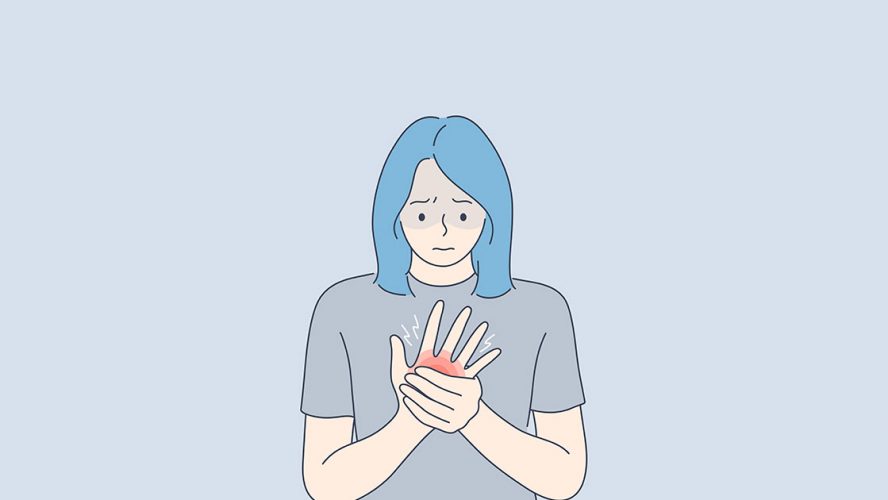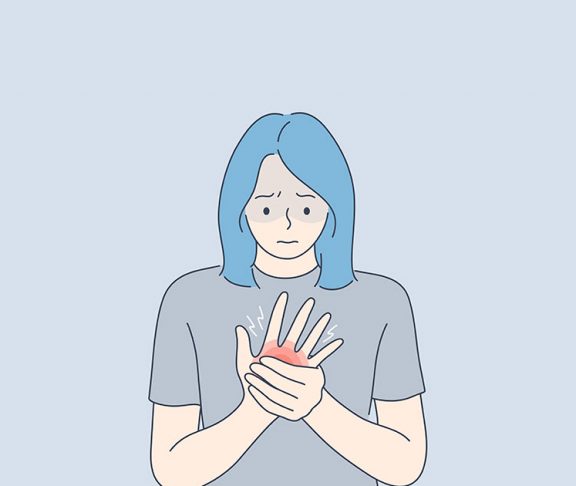Pain affects millions of people in America, and the use of opioid medications to treat pain has contributed to the national opioid crisis.

Rebecca G. Baker, Ph.D.
Director, National Institutes of Health Helping to End Addiction Long-term Initiative
While opioids can treat many types of short-term (acute) pain, they don’t always work for chronic pain and carry risks of addiction and dangerous side effects. Long-term solutions to the opioid crisis will require addressing the needs of the millions of Americans with pain.
Chronic pain, lasting months to years, affects 50 million people nationwide. That’s one in five adults. Of these, 25 million report severe pain daily, and 20 million experience high-impact chronic pain that interferes with carrying out the activities of daily life. This pain has many faces, like the agonizing discomfort from a slipped disc or nonstop burning or tingling in fingers and toes from nerve pain related to cancer or diabetes.
Some people, such as those with multiple health conditions and those receiving dialysis for kidney failure, experience daily pain but can’t take certain pain medications that interfere with kidney function. Opioid use rates in these individuals are almost three times that of the general U.S. population over 65. For these people, researchers are testing non-medication approaches as well as a safer and less addictive type of opioid medication (buprenorphine) that can be effective for treating pain.
Personalizing prevention
Everyone feels pain differently, meaning that we can’t use a one-size-fits-all approach. Ultimately, people need strategies that work for them, and research is now providing a menu of safe and effective non-opioid pain relief options. For example, complementary and integrative treatments — such as acupuncture, yoga, mindfulness, and physical therapy — are effective, but they are underused.
Scientists funded by the National Institutes of Health (NIH) are working to increase their use through practical, real-world research to encourage use of these treatments in places where people receive routine care. This will allow the practices to be made more widely available more quickly if successful.
Finding even more non-opioid solutions for pain is an urgent task for another reason. People with both chronic pain and opioid use disorder also need safe and effective pain treatment. These individuals are often excluded or judged harshly by friends, family, and providers, facing damaging stigma from all sides. As a result, they may be unwilling to seek care, leading to unmanaged pain, worsening health, challenges to recovery, and even loss of life from overdose. NIH-funded researchers are developing and testing several interventions used together (such as psychotherapy, medicines for opioid use disorder, exercise, and pain self-management) to care for these individuals in a way that healthcare systems can provide.
Solutions beyond opioids
For all individuals who experience pain, we need solutions beyond opioids. Scientists have been working to develop these for decades, but unfortunately, many promising candidate drugs are not successful after years of testing in labs, on animal models, and then on patient volunteers. Few potential pain medications ever make it to clinical testing, and only a very small number gain approval from the Food and Drug Administration for use among people with pain. Basic and clinical research funded by the NIH is filling this gap by advancing innovative approaches toward the development of novel medications, devices, and complementary and integrative approaches to treat pain without the risks of opioids.
The combined serious problems of unmanaged pain, opioid addiction, and opioid overdose deaths continue to evolve and present extremely important needs. Luckily, research is providing answers — and much-needed hope — for the millions of people, families, and communities affected by poorly-treated pain disorders and the opioid crisis.

